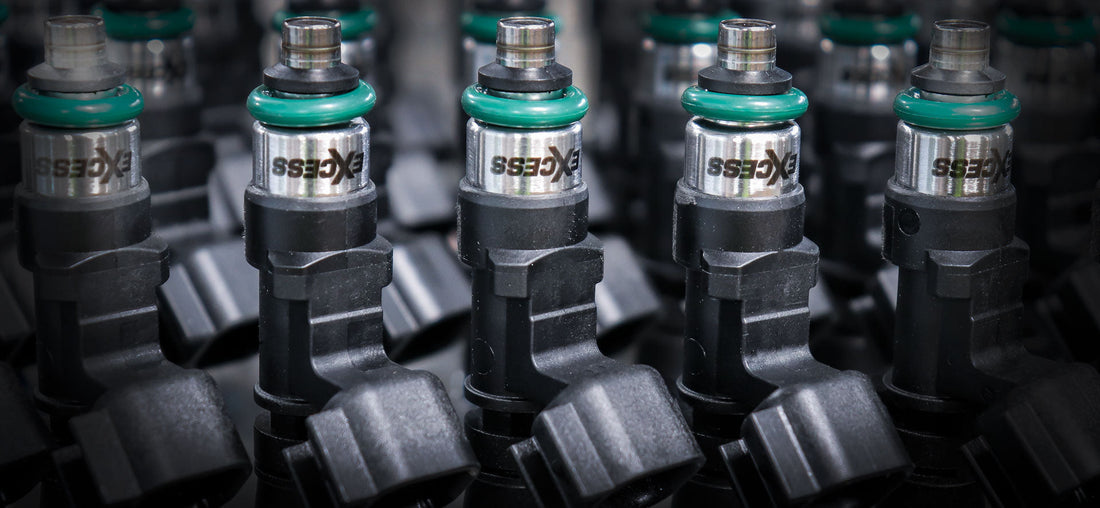What's in this article
Replacing fuel injectors can seem scary but with the right tools, knowledge and safety precautions it's a job any skilled DIY car person can do. Fuel injectors are a vital part of your engine, they deliver the right amount of fuel for optimal combustion. When they fail it can cause poor performance, rough idling or even engine damage.
In this guide you'll learn how to replace fuel injectors, how to diagnose when they're failing and how to maintain them to prevent future problems. Let's get started.
How do you know your fuel injectors need replacing
Before you start replacing them it's important to know the signs of failing injectors. Here are the most common:
- Engine misfires or rough idling: A clogged or faulty injector can disrupt the air fuel mixture and cause the engine to run rough.
- Poor fuel economy: If your vehicle's mileage drops significantly a faulty injector may be over or under fuelling.
- Trouble starting the engine: Not enough fuel delivery can make the car hard to start.
- Check Engine Light: A faulty injector will trigger error codes and illuminate the Check Engine light.
- Fuel leaks: If you see raw fuel leaking from an injector it's a fire hazard and the injector needs to be replaced immediately.
Tools and safety
Replacing fuel injectors involves handling flammable liquids so safety first. Here's the tools you'll need and precautions to take:
Tools:
- Wrenches and socket/ratchet set
- Screwdrivers (flathead and Phillips)
- Pliers
- Fuel line disconnect tool
- Protective gloves and safety goggles
- Clean rags or towels
Safety:
- Disconnect the battery to prevent accidental sparks.
- Bleed the fuel system by removing the fuel pump relay and cranking the engine or by pressing the Schrader valve on the fuel line.
- Let the engine cool completely before starting.
- Work in a well ventilated area and have a fire extinguisher nearby.
- Wear gloves and safety glasses to protect against fuel spills.
How to replace fuel injectors
Follow this step by step guide to replace your fuel injectors safely and correctly:
1. Prepare the vehicle
- Disconnect the negative battery terminal.
- Bleed the fuel system using the method above.
- Remove any components that are in the way of the injectors such as the air intake, engine covers or intake manifold.
2. Remove the old fuel injectors
- Find the fuel rail connected to the injectors. Unbolt the bolts that hold the fuel rail to the engine.
- Wriggle the fuel rail to loosen the injectors; they may come out with the rail.
- If not, remove each injector individually by pulling it out of its mounting location.
3. Inspect and clean
- Inspect the injector ports for debris or carbon build up. Clean these areas with a clean rag or special cleaning solution.
- Check the o-rings on the old injectors; if they're damaged or worn replace them on the new injectors for a good seal.
4. Install
- Apply a small amount of engine oil to the o-rings on the new injectors to prevent them from tearing during installation.
- Insert each injector into its port and make sure it's seated.
- Reattach the fuel rail and bolt it in tight.
5. Reassemble and test
- Put back any components you removed earlier such as the air intake or engine covers.
- Reconnect the negative battery terminal and start the engine.
- Check for fuel leaks around the injectors and fuel rail.
If the engine doesn't start immediately crank it for a few seconds to allow the fuel system to pressurise.
Problems and solutions
Things can go wrong even with proper preparation. Here's what to do:
- Stuck injectors: Use a fuel injector puller tool to remove injectors that won’t come out.
- Fuel leaks: Check the o-rings and make sure the injectors are seated in their ports.
- Engine problems persist: If problems continue after replacement there may be an ECU, wiring or other engine component issue. If needed seek professional help.
Fuel injector maintenance
Maintenance can extend the life of your fuel injectors and keep your engine running sweet:
- Use good quality fuel to minimize contaminants and carbon build up.
- Add fuel injector cleaner to your fuel tank every 3,000-5,000 miles.
- Replace your fuel filter regularly to stop debris getting to the injectors.
- Have your injectors cleaned professionally every 30,000-50,000 miles if you notice performance issues.
Quick Answers to Common Questions
Q: How do I know my fuel injector is failing?
A: Look for symptoms of a bad fuel injector like rough idling, poor fuel economy or engine misfires. A Check Engine light may also come on.
Q: Do I have to replace all fuel injectors at once?
A: While you can replace just the faulty one, replacing all at the same time will give you consistent performance and avoid the labour of doing it again.
Q: Can I replace a fuel injector myself?
A: Yes if you're a DIYer. But if you're unsure or don't have the right tools, it's best to get professional help.
Replacing your fuel injectors?
Replacing fuel injectors doesn't have to be scary. With this guide you're ready to do it yourself. Whether you're troubleshooting engine problems or doing maintenance, a good fuel injection system is key to peak performance.
Not sure what injectors you need for your car? Go to your local auto parts store or trusted mechanic for advice. And if you're feeling overwhelmed, get professional help.
 1800 615 6344
1800 615 6344
 My Account
My Account
 Trade Application
Trade Application



